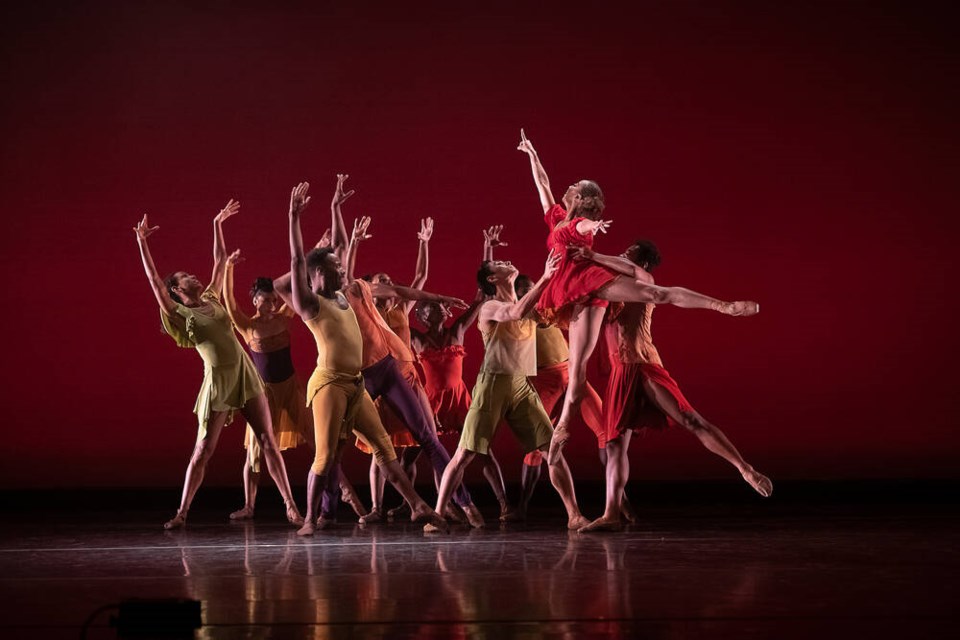It was a wonderful weekend of dance in Victoria. For the first time ever, the storied Dance Theatre of Harlem performed here, with sold-out shows at the Royal Theatre on Friday and Saturday.
The Dance Theatre of Harlem is a legend in the history of American dance. Based in New York City’s Harlem district, the company was founded in 1969 by Arthur Mitchell, a principal dancer at New York City Ballet. Dance Theatre of Harlem is credited as being the first black classical ballet company.
On Friday, buoyed by a cheering crowd, the troupe offered a mixed program that proved to be a varied and satisfying introduction to the company. The most memorable offerings were Higher Ground, an exploration of Stevie Wonder’s fertile 1970s period, and Blake Works IV: (The Barre Project), showcasing the dancers’ honed technical prowess.
A genius in the world of pop, soul and R&B, Wonder reached a creative apex half a century ago. Higher Ground is a six-song blend of classical ballet and vernacular dance choreographed by Robert Garland (who will soon take over as artistic director from Virginia Johnson).
The first segment of the 28-minute piece is set to the song Look Around. An uncharacteristic Wonder outing from 1971, the clavinet-driven tune embraces classical music, psychedelia, even prog-rock. Costumed casually in orange T-shirts and slacks under a blue light, the dancers brought to mind Matisse’s iconic 1910 painting Dance.
Higher Ground heated up with You Haven’t Done Nothing. A searing chunk of clav-funk, this is Wonder’s jab at Nixon-era politics (“We are sick and tired of hearing your song/ Tellin’ how your gonna change right from wrong”). Here Garland conjures up the heyday of the black-power movement, with the six dancers occasionally wagging a finger or raising a fist. The movement was graceful, proud — conveying a potent sense of Dance Theatre of Harlem’s history and identity.
Village Ghetto Land is equally political, a denunciation of poverty with Wonder singing about people eating from “garbage cans” and children playing in rusted car bodies. Tough stuff, yet the choreography leavens its hard-eye social commentary with humanity and even humour (this segment ends with the dancers pulling out iPhones for a group selfie).
As impressive as Higher Ground was, nothing topped Blake Works IV: (The Barre Project). Choreographed by William Forsythe as the latest instalment in an ongoing project, the 23-minute piece, with music by James Blake, is a Dance Theatre of Harlem commission. The electronic score is unorthodox, notable for synth-filtered singing that’s achingly vulnerable and intimate. The overall sound is sparse, very minimalistic — in the silences one could plainly hear the tapping of dancers’ feet on the stage.
As one might expect, the barre (the hand-rail used in ballet) is prominently featured as a prop. Sixteen dancers, in crimson/purple velvet outfits, were dramatically half lit from above. They performed with jaw-dropping strength and control, almost scalpel-like in the precision of balletic movement that powerfully gave the impression of cutting shapes through space and time. The effect was breathtaking — this finale earned the most enthused applause of the night.
The evening opened with George Balanchine’s joyful Allegro Brillante (1956) set to Tchaikovsky’s vivacious, spring-like score. While it had fine moments, the night’s second offering, Helen Pickett’s When Love, was much more remarkable.
When Love is a duet set to low, brooding synth music by Philip Glass (a selection from Einstein on the Beach). A rumination on the mystery of romantic love, the choreography is beautifully lyrical and on this night was deftly performed by Amanda Smith and David Wright.
Dance Victoria, which presented the Dance Theatre of Harlem, has announced its 2023-24 season. There will be performances by the Gibney Company, Compagnie Hervé Koubi, Nrityagram Dance Ensemble and Ballet Jazz Montréal. Special presentations include the Ukrainian Shumka Dancers and Australia’s Circa.



